Slava Ukraini! In early 2022 I began a Telegram channel aggregating news from a number of sources daily on the war in Ukraine. In June 2023 I began providing a daily draft for the Ukraine War Brief Podcast collecting news from over 70 sources daily, which formed the basis of the script. While the Podcast no longer exists I have continued to make this Brief available for my followers here on Substack for those who wish to keep up with the news from the war.
All the latest news on the Russo-Ukraine War 6 days per week
ALONG THE CONTACT LINE
GSAFU Morning Report
The General Staff of the Armed Forces of Ukraine in its Operational Information update at 08:00 on Jan 18 stated that day 1060 of the full-scale invasion of the Russian Federation against Ukraine had begun.
The situation on the line of combat remains tense in some sectors. Ukrainian defenders continue to actively counteract the Russian aggressor, causing them losses in personnel equipment and technology. Exhausting the enemy along the entire front line and continuing to disrupt the plans of Russian occupiers to advance deeper into the territory of Ukraine.
During the past day, 174 combat engagements took place. Over the past 24 hours, the enemy carried out 1 missile strike, air strikes, used 2,147 drones and approximately 4,000 artillery strikes across the positions of Ukrainian forces and civilians.
Air Force Daily Report
2 BALLISTIC MISSILES AND 24 ENEMY UAVS SHOT DOWN
➖➖➖➖➖➖➖➖➖
On the night of January 18, 2025 (from 19:00 on January 17), the enemy attacked with 39 Shahed attack UAVs and simulator drones of various types from the directions: Millerovo, Bryansk, Primorsko-Akhtarsk - Russia, and also used four Iskander-M /KN -23 ballistic missiles (launches from Voronezh and Bryansk regions - Russia).
The air attack was repelled by anti-aircraft missile troops, electronic warfare units, and mobile fire groups of the Air Force and Defense Forces of Ukraine.
As of 08:00, it was confirmed that two Iskander-M /KN -23 ballistic missiles were shot down in the Kyiv region and 24 Shahed attack UAVs and drones of other types in Poltava, Sumy, Kharkiv, Cherkasy, Chernihiv, Kyiv, Khmelnytskyi, Zhytomyr, Kirovohrad, Dnipropetrovsk, Kherson and Donetsk regions.
14 enemy drone simulators were lost in location (without negative consequences).
Unfortunately, people died as a result of the enemy attack on Kyiv - the downed ballistic missiles fell in the Shevchenkivskyi district of the city. The production building of the enterprise was partially destroyed, houses, the entrance to the metro, cars and the main water supply were damaged.
According to preliminary data, there is currently no information about the dead in Zaporizhia, search operations are ongoing, but there are injured people, they are being provided with assistance. The enemy hit one of the city's enterprises with ballistic missiles, houses and vehicles were also damaged.
Combat Operations in the Russian Federation
The Institute for the Study of War (ISW), a US based think tank, in its Jan 18 Russian Offensive Campaign Assessment reported that Russian forces recently advanced in the main Ukrainian Kursk Oblast salient amid continued fighting on Jan 17. Geolocated footage published on Jan 16 indicates that Russian forces recently advanced southwest of Viktorivka (southeast of Korenevo). Fighting continued north of Sudzha near Pogrebki and Cherkasskoye Porechnoye; south of Sudzha near Makhnovka; and in the forest belts near Sudzha on Jan 17. The Russian Ministry of Defense (MoD) claimed on Jan 17 that Russian forces have retaken 63.2 percent of the Ukrainian salient in Kursk Oblast. ISW‘s assessment of currently available open-source data is that Russian forces have regained about 50 percent of the Ukrainian salient, however. The Russian MoD claimed that elements of the Chechen "Akhmat" Spetsnaz forces, Russian 42nd Motorized Rifle Divisions (58th Combined Arms Army [CAA], Southern Military District [SMD]), and 106th Airborne (VDV) Division recently repelled a Ukrainian counterattack in the direction of Berdin (northeast of Sudzha). Ukrainian military observer Yuriy Butusov reported on Jan 17 that Russian forces apply "scorched earth" tactics in Kursk Oblast by leveling their settlements, such as Darino (northwest of Sudzha), to the ground. A Ukrainian soldier operating in Kursk Oblast stated that Russian forces are conducting infantry assaults and assaults on all-terrain vehicles (ATVs) and motorcycles in the Kursk direction in order to conserve armored vehicles.
The Khortytsia operational-strategic group
(Responsible for the northeastern part of Ukraine. )
Kharkiv Sector: Russian forces recently advanced northeast of Kharkiv City amid continued offensive operations in the area on Jan 17. Geolocated footage published on Jan 15 and 16 indicates that Russian forces recently marginally advanced to Zernova Street in northern Vovchansk (northeast of Kharkiv City) and that elements of the Russian 136th Motorized Rifle Brigade (58th Combined Arms Army [CAA], Southern Military District [SMD]) advanced along a road in southern Tykhe (northeast of Kharkiv City)
Kupyansk Sector: Russian forces recently marginally advanced in the Kupyansk direction amid continued offensive operations on January 17. Geolocated footage published on January 17 indicates that Russian forces recently advanced northwestward along the P-07 Svatove-Kupyansk highway southwest of Stepova Novoselivka (southeast of Kupyansk).
Borova Sector: Russian forces recently advanced in the Borova direction amid continued offensive operations on Jan 17. Geolocated footage published on Jan 17 indicates that Russian forces recently advanced east of Zeleny Hai (northeast of Borova).
Toretsk Sector: Russian forces recently advanced west of Toretsk amid continued offensive operations in the area on Jan17. Geolocated footage published on Jan 16 indicates that Russian forces recently advanced along Lesi Ukrainky Street in eastern Petrivka (west of Toretsk).
The Tavria operational-strategic group
(Responsible for the central-eastern and southeastern part of Ukraine.)
Pokrovsk Sector : Russian forces recently advanced in the Pokrovsk direction amid continued offensive operations in the area on Jan 17. Geolocated footage published on Jan 17 indicates that Russian forces likely seized Yasenove and also advanced along the south (left) bank of the Solona River north of Uspenivka (both southwest of Pokrovsk).
Kurakhove Sector: Russian forces recently advanced southwest of Kurakhove amid ongoing offensive operations in the area on Jan 17. Geolocated footage published on Jan 17 indicates that likely elements of the Russian 39th Motorized Rifle Brigade (68th AC, Eastern Military District [EMD]) recently advanced northeast of Sukhi Yaly (southwest of Kurakhove) along the northern bank of the Sukhi Yaly River.
Velyka Novosilka Sector: Russian forces seized Vremivka on Jan 17 as part of their efforts to envelop Velyka Novosilka and force Ukrainian forces to withdraw from the settlement. Geolocated footage published on Jan 27 shows elements of the Russian 127th Motorized Rifle Division (5th Combined Arms Army [CAA], Eastern Military District [EMD]) planting a Russian flag in northwestern Vremivka (just west of Velyka Novosilka), indicating that Russian forces recently seized the settlement. Russian milbloggers also credited elements of the 60th Motorized Rifle Brigade (5th CAA, EMD) with the seizure of Vremivka and claimed that Russian forces seized the settlement within three days (since Jan 14) and advanced northeast of Velkya Novosilka, further north of Vremivka, and southeast of Novosilka (west of Velyka Novosilka). Russian forces continued attacking near Velyka Novosilka and Vremivka on Janu 16 and 17.
The Odesa operational-strategic group
(Responsible for Kherson, Qırım, (also known as Crimea) and the Black Sea.)
There have been no major changes to the combat environment since our last report.
TEMPORARILY OCCUPIED TERRITORIES
Nothing major to report.
THE HOME FRONT
Russian attacks against Ukraine kill 8, injure 38 over past day
Russian attacks against Ukraine killed eight people and injured at least 38 others over the past day, the Kyiv Independent reported citing regional authorities on Jan. 17.
Ukrainian forces downed 24 out of the 39 drones, including Shahed-type attack drones, launched by Russia overnight, the Air Force reported.
Another 14 drones disappeared from radars without causing any damage, according to the statement. Drones that disappear from radars before reaching their targets are usually decoys. Russia launches them alongside real drones to overwhelm Ukraine's air defense.
Russia also launched four ballistic missiles of either the Iskander-M or the North Korean KN-23 model in the early hours of Jan. 18, with two of them downed by Ukraine's Air Force.
Fallen wreckage from the downed missiles killed three people and injured at least three others in Kyiv, according to local authorities.
The attack damaged a water pipeline, an administrative building, a business center, a store, and cars, the State Emergency Service said. The glass entrance to the Lukianivska metro station and the neighboring McDonald's building were also damaged.
Russia also attacked the city of Zaporizhzhia, partially destroying the building of an industrial facility, Governor Ivan Fedorov said. At least 10 people suffered injuries, he added.
The attack also damaged St. Andrew's Cathedral in the city, RIA-Pivden media outlet reported.
A Russian missile attack on Kryvyi Rih in Dnipropetrovsk Oblast killed five people and injured 19 others, including four children, said Oleksandr Vilkul, head of the city's military administration.
Among the victims are four women aged 61, 50, 43, and 22, as well as a 20-year-old man.
The attack damaged four high-rise buildings, houses and an educational institution, Governor Serhii Lysak said.
One person was also injured in the town of Pokrovsk in Donetsk Oblast, Governor Vadym Filashkin said.
In Kherson Oblast, Russian forces targeted 31 settlements, including the regional center of Kherson. One person was killed, and five others were injured over the past day, Governor Oleksandr Prokudin reported.
Ex-MP, leader of Russia-affiliated Ukrainian Orthodox Church charged with treason.
Ukrainian law enforcement officers charged former lawmaker and businessman Vadym Novynskyi with high treason and incitement to religious hatred in absentia, the Kyiv Independent reported citing the State Bureau of Investigation (SBI).
The SBI didn't mention the suspect's name, but the description and the video made it clear that this was Novynskyi.
Novynskyi is an ex-lawmaker from the pro-Russian Opposition Bloc, which was banned in Ukraine shortly after the start of Russia's full-scale war, and sponsor of the Moscow-backed church in Ukraine.
For years, Novynskyi was listed among the richest Ukrainians, with Forbes estimating his wealth at $1.4 billion in the spring of 2023.
According to the investigation, Novynskyi has been publicly promoting Russian narratives since Moscow's invasion in 2014.
"The MP tried to form anti-government and pro-Russian sentiments in Ukrainian society, justify Russian aggression, etc.," the SBI said.
Law enforcement officials called Novynskyi a "handler" of the Russian Orthodox Church (ROC) in Ukraine. In December 2022, Ukraine imposed sanctions against him and other leaders of the Russia-affiliated Ukrainian Orthodox Church.
The former MP followed the instructions of Patriarch Kirill of Moscow, the head of the Russian Orthodox Church, maintained close ties with him for a long time, and was hierarchically subordinate to him, the statement read.
After the start of the full-scale invasion, Novynskyi resigned from Ukraine's parliament and fled abroad. He continues "to assist Russia in conducting subversive information activities," the SBI said.
If detained and convicted, he might face up to 15 years in prison with or without confiscation of property.
RUSSIAN WORLD
Ukraine strikes strategic Russian oil depots in Tula, Kaluga oblasts
Ukrainian forces attacked oil depots in Russia's Tula and Kaluga oblasts overnight on Jan. 18, according to the General Staff and the Kyiv Independent's source in Ukraine's military intelligence (HUR). Euromaidan Press reported on Jan 18.
The drones operated by Ukraine's military intelligence (HUR) hit the oil depot in Tula Oblast at least 10 times in this attack, the HUR source claimed.
Tula Oblast, located south of Moscow, has regularly come under attack by Ukrainian drones.
Videos posted on social media and shared by residents appear to show a large fire at an oil depot in the town of Uzlovaya in the region.
HUR also reported striking an oil depot in Russia’s Kaluga Oblast on the same night. Kaluga Oblast is situated approximately 290 kilometers (180 miles) north of the Ukrainian border.
The targeted facility in Kaluga is part of the Kaluganefteprodukt joint stock company and serves as a logistics center supplying Russian Federation units involved in the war against Ukraine.
The attack resulted in a fire on the base’s territory.
Moscow’s Senior Officials Continue Efforts to Justify Aggression.
The UK Ministry of Defence in their Jan 17 Intelligence Update on Ukraine stated Nikolai Patrushev, an influential and long-term ally and presidential aide to Russian President Putin, as well as the former Secretary of Russia’s Security Council reportedly stated that Ukraine could "cease to exist" as a country in 2025 in an interview with the Kremlin-aligned Komsomolskaya Pravda. Despite claiming a “fraternal” bond between Russians and Ukrainians, he blamed the destruction of Ukrainian cities on Ukraine’s supposed “violent enforcement of neo-Nazi ideology” and “ardent Russophobia.”
Patrushev’s comments form part of a longstanding pattern of anti-Ukraine statements by senior Russian officials, which seek to undermine and threaten Ukrainian nationhood, identity and culture. This directly contradicts Russia’s recognition of Ukraine’s independence and sovereignty following the collapse of the Soviet Union, as well as international recognition of Ukraine.
Russian leadership rhetoric and frequent allegations of Ukrainian Nazism prior to, and since the full-scale Russian invasion of Ukraine in 2022, almost certainly seeks to influence the Russian military personnel and the domestic population into participation in, and support for, Russia's war in Ukraine. It seeks to take advantage of the deep historical and psychological impact of Russia's war with Nazi Germany to foster perceptions of Ukraine and Ukrainians as a threat, thereby justifying the invasion. Such narratives have been supported and proliferated by Russian state-controlled media.
INTERNATIONAL NEWS
French patrol aircraft was 'target of Russian intimidation' over the Baltic Sea.
A French maritime patrol aircraft was the target of intimidation tactics over the Baltic Sea overnight on Jan. 17, after the aircraft was locked onto by the radar of a Russian ground-to-air defense system, France's Defense Minister Sebastien Lecornu announced on social media.
The aircraft was patrolling in international airspace over the Baltic Sea overnight between Jan. 16 - 17 as part of a NATO operation, the defense minister said.
"This aggressive Russian action is not acceptable," Lecornu wrote on X. "Our armies will continue to act to defend freedom of navigation in international air and maritime spaces."
The Baltic Sea region has witnessed growing concerns over Russian sabotage since Western nations began supporting Ukraine following Russia’s full-scale invasion in 2022.
On Dec. 25, four telecommunication cables and one power cable in the Baltic Sea were damaged, with Finnish authorities suspecting the involvement of the Russian "shadow fleet" vessel Eagle S.
Following the incident, NATO Secretary General Mark Rutte vowed to increase NATO's military presence in the region. On Jan. 14, eight NATO member states bordering the Baltic Sea unveiled a coordinated action plan to address risks to underwater infrastructure following the suspected sabotage.
In addition to sabotage efforts, Russia has been repeatedly accused of jamming the GPS signal of various aircrafts, particularly in the Baltic Sea region.
In March, Russia likely jammed the satellite signal of a Royal Air Force aircraft used to transport then-U.K. Defence Minister Grant Shapps near Kaliningrad.
On Dec. 9, two Dutch F-35 fighter jets intercepted Russian aircraft over the Baltic Sea. Later they were also scrambled again to intercept a Russian IL-20 reconnaissance aircraft.
Russian aircraft frequently operate over the Baltic Sea without transponders or flight plans, actions often seen as testing NATO's response capabilities.
MILITARY & TECH
Russia faces unprecedented vulnerability to drone attacks.
Recent developments in the ongoing war between Russia and Ukraine reveal significant shortcomings in Russia’s ability to defend against a growing number of Ukrainian drone strikes targeting critical infrastructure deep within Russian territory. Defence Blog reports.
Despite the Kremlin’s efforts to control the narrative through state media, the repeated success of Ukrainian unmanned aerial vehicle (UAV) attacks highlights a clear gap in Russia’s air defense capabilities.
In recent weeks, Ukrainian drones have hit multiple oil depots and refineries located far from the front lines, including sites in Kaluga and Tula regions. Videos of the resulting damage have surfaced across social media platforms, underscoring the effectiveness of these strikes.
Telegram channels closely linked to the Russian military have openly criticized the government for its failure to adapt to this evolving threat.
One widely followed channel, Voyennyy Osvedomitel (Military Informant), stated: “Over the past night, the enemy successfully targeted two more oil depots in Russian territory, spreading footage of the aftermath across local and Ukrainian channels. The growing efficiency and scale of drone strikes against targets in our rear have become a regular occurrence.”
The statement further acknowledged the inadequacy of Russia’s current air defense systems in countering the swarm tactics of inexpensive, low-flying drones. The critique called for the establishment of mobile anti-drone units integrated into a centralized information network to better respond to these threats.
Long-range UAV attacks are becoming an increasingly prominent aspect of the Russia-Ukraine war. As the ground war remains bogged down, the air war, spearheaded by drones, has gained momentum. Ukrainian forces have successfully targeted high-value military assets, including ammunition depots, fuel storage facilities, and even strategic bomber bases.
In one of the most notable incidents, Ukrainian drones struck a Russian ammunition depot in Tver Oblast, located between Moscow and St. Petersburg. According to Ukrainian sources, the strike destroyed a stockpile of Iskander tactical missiles, glide bombs, and artillery shells. Witnesses reported powerful explosions visible from miles away.
More recently, Ukrainian drones attacked the Engels Air Base, a critical site for Russia’s strategic bomber fleet. The strike reportedly hit fuel and ammunition storage facilities, further diminishing Russia’s ability to sustain prolonged military operations.
Russia’s inability to adapt its air defense strategy to counter the growing sophistication and frequency of Ukrainian drone strikes has become a pressing issue. Analysts argue that existing systems, designed for high-altitude threats, struggle to intercept small, low-flying UAVs. The sheer number of drones deployed exacerbates the challenge, overwhelming localized defenses.
Military experts have pointed to Ukraine’s collaboration with Western nations, particularly the United States, in developing and producing advanced drone technologies. This partnership has allowed Ukraine to rapidly scale its UAV capabilities, leaving Russia lagging in both production and countermeasures.
One Russian Telegram channel lamented: “The initial surge in Ukraine’s drone production, supported by the U.S., was ignored. Now, the rising frequency and scale of these strikes are impossible to overlook. The consequences are evident every night.”
Ukraine’s growing drone warfare capability not only exposes vulnerabilities in Russia’s defenses but also shifts the dynamics of the conflict. These strikes force Russia to divert resources to protect critical infrastructure, further straining its military logistics. For Ukraine, the attacks represent a cost-effective means of disrupting Russia’s war effort and demonstrating its ability to retaliate even in the face of a prolonged ground war.
That’s it for today’s Brief folks if you would like to keep up with events in Ukraine daily please consider subscribing, it’s free!


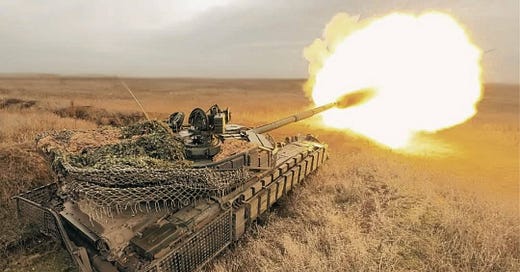




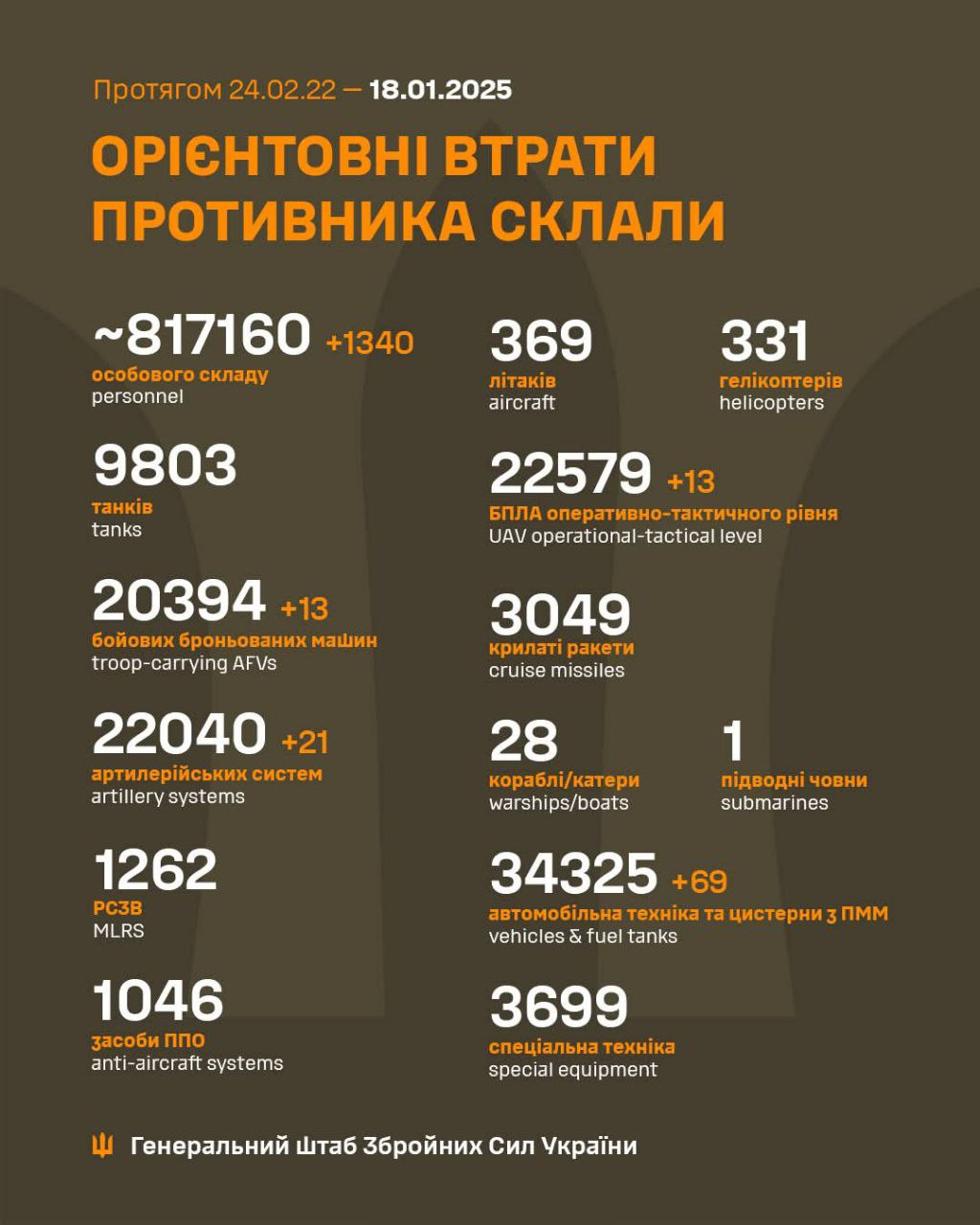
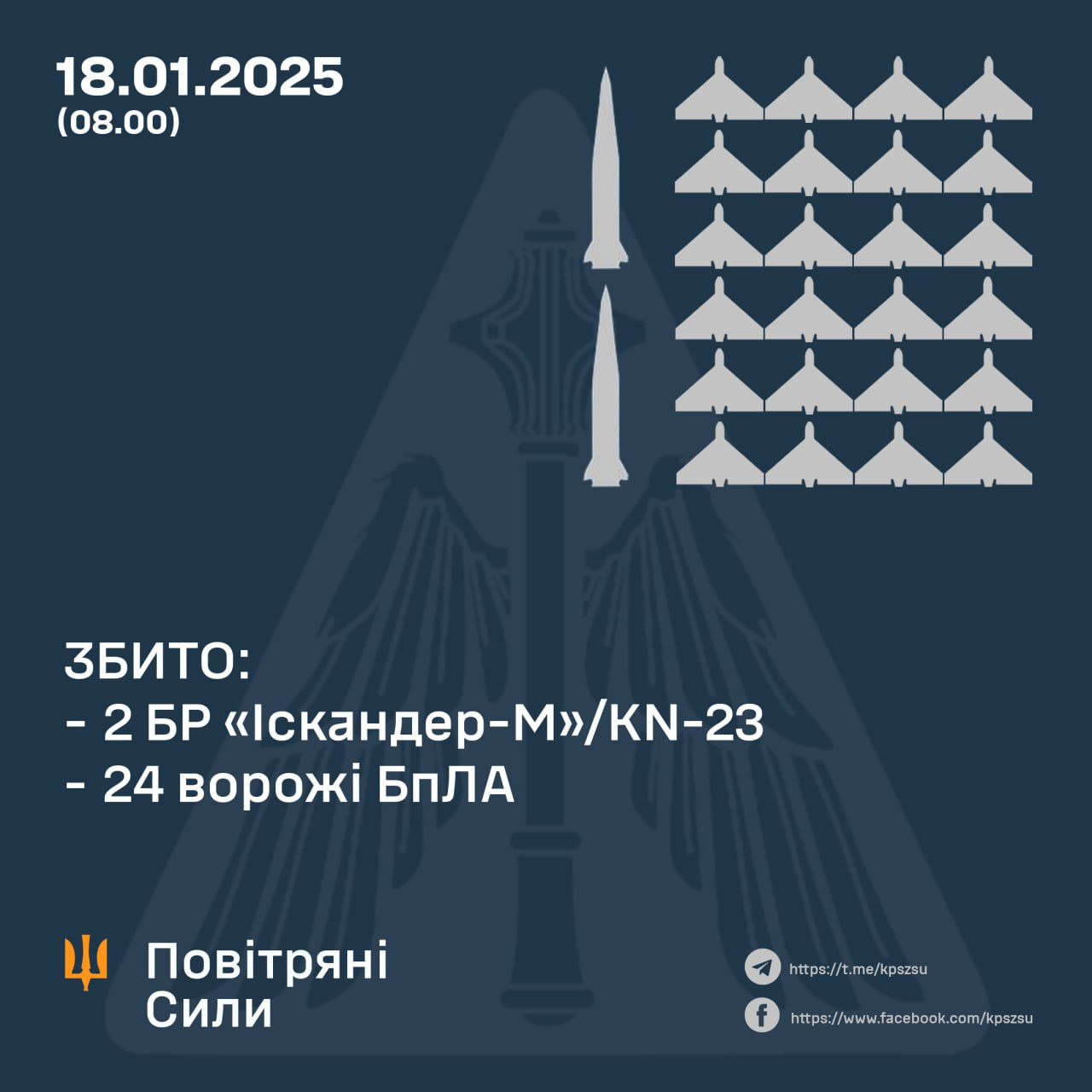
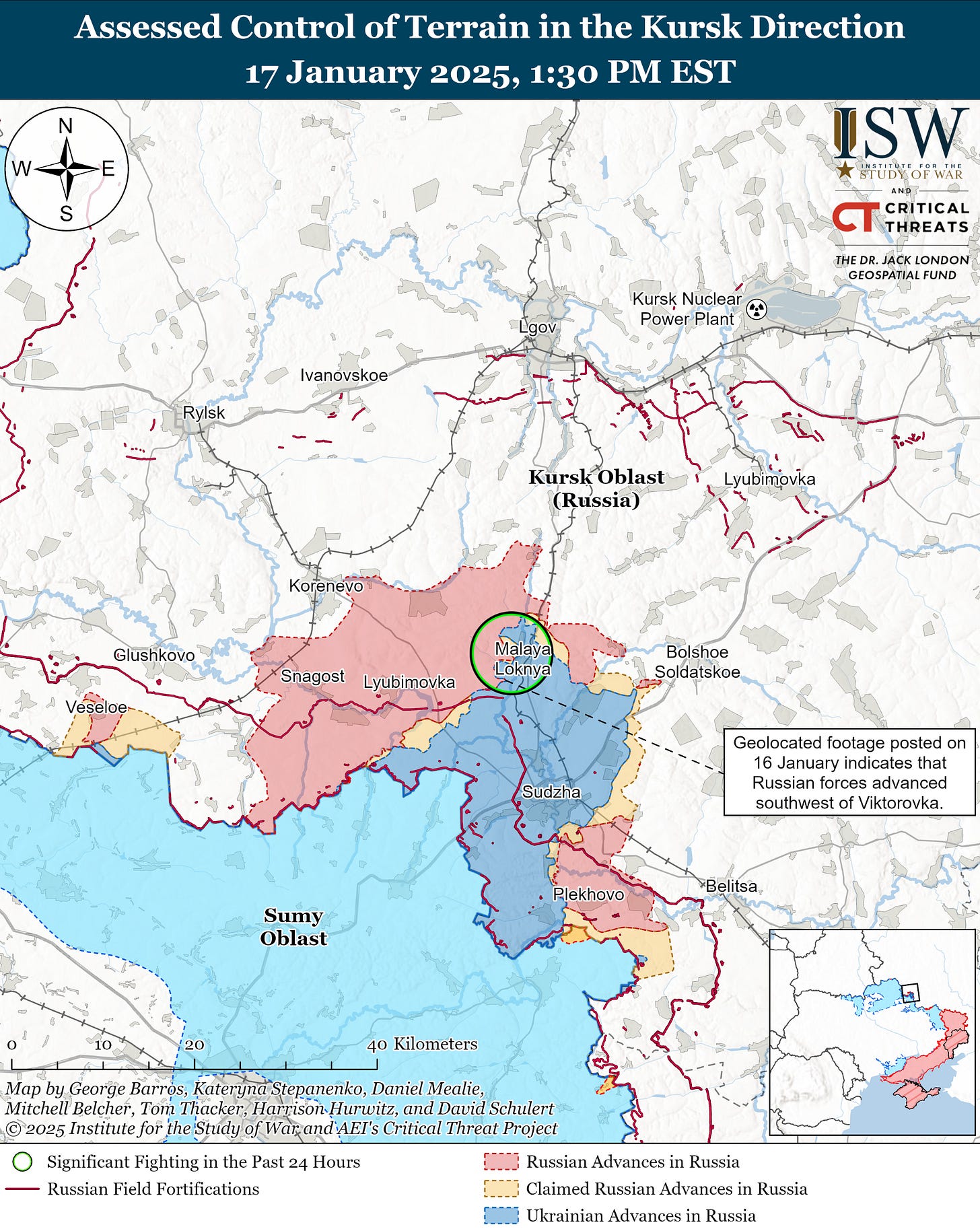
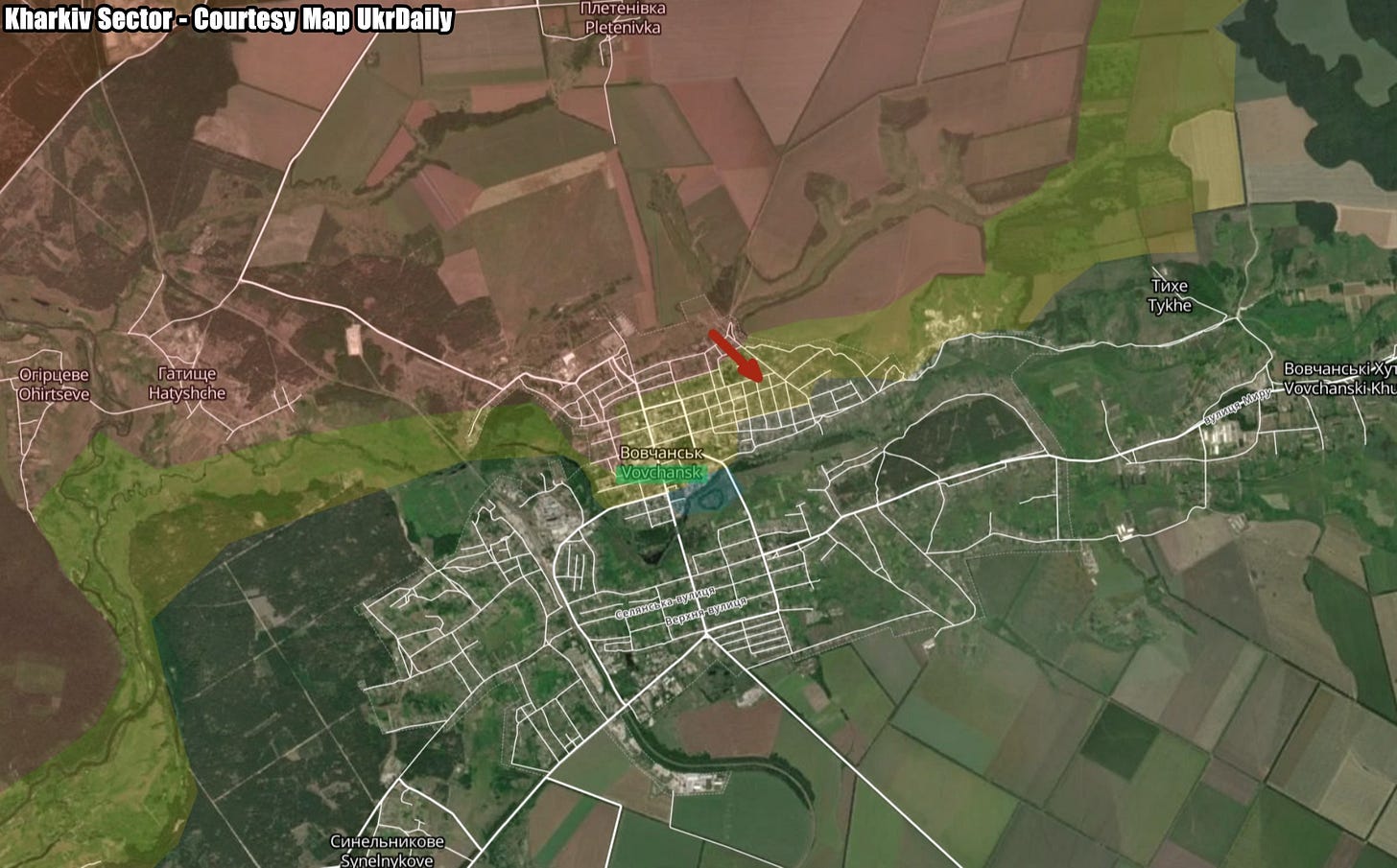
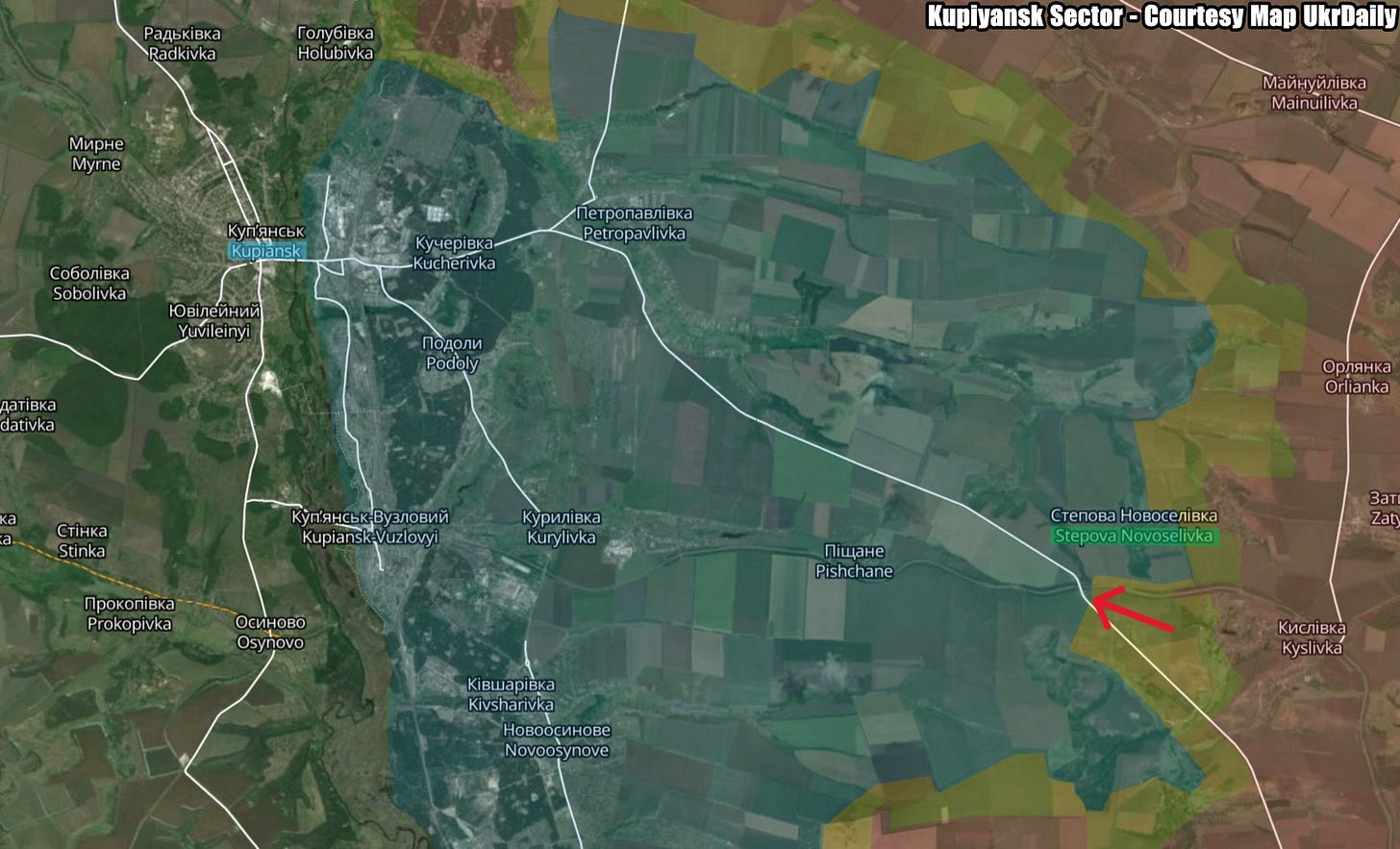
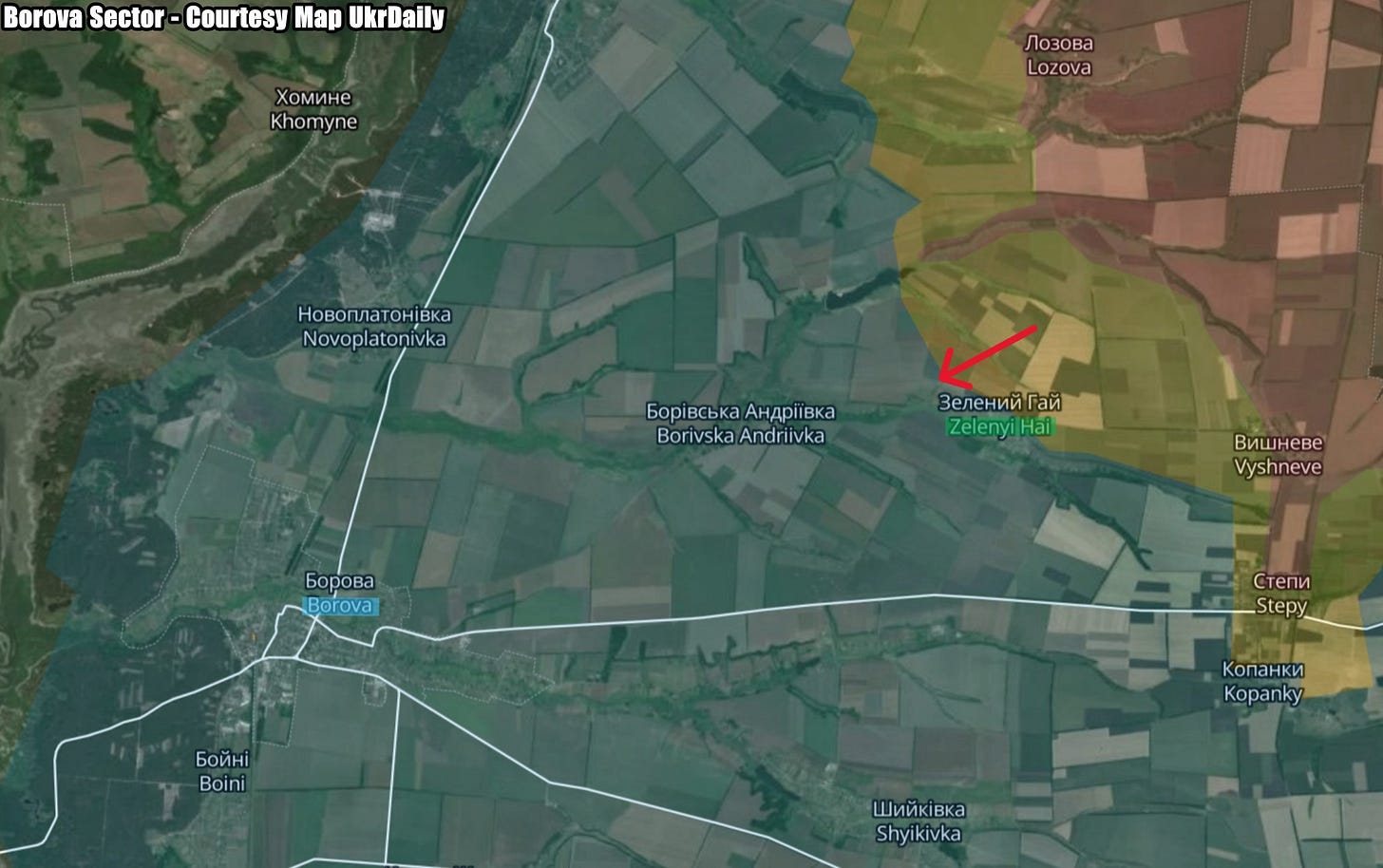
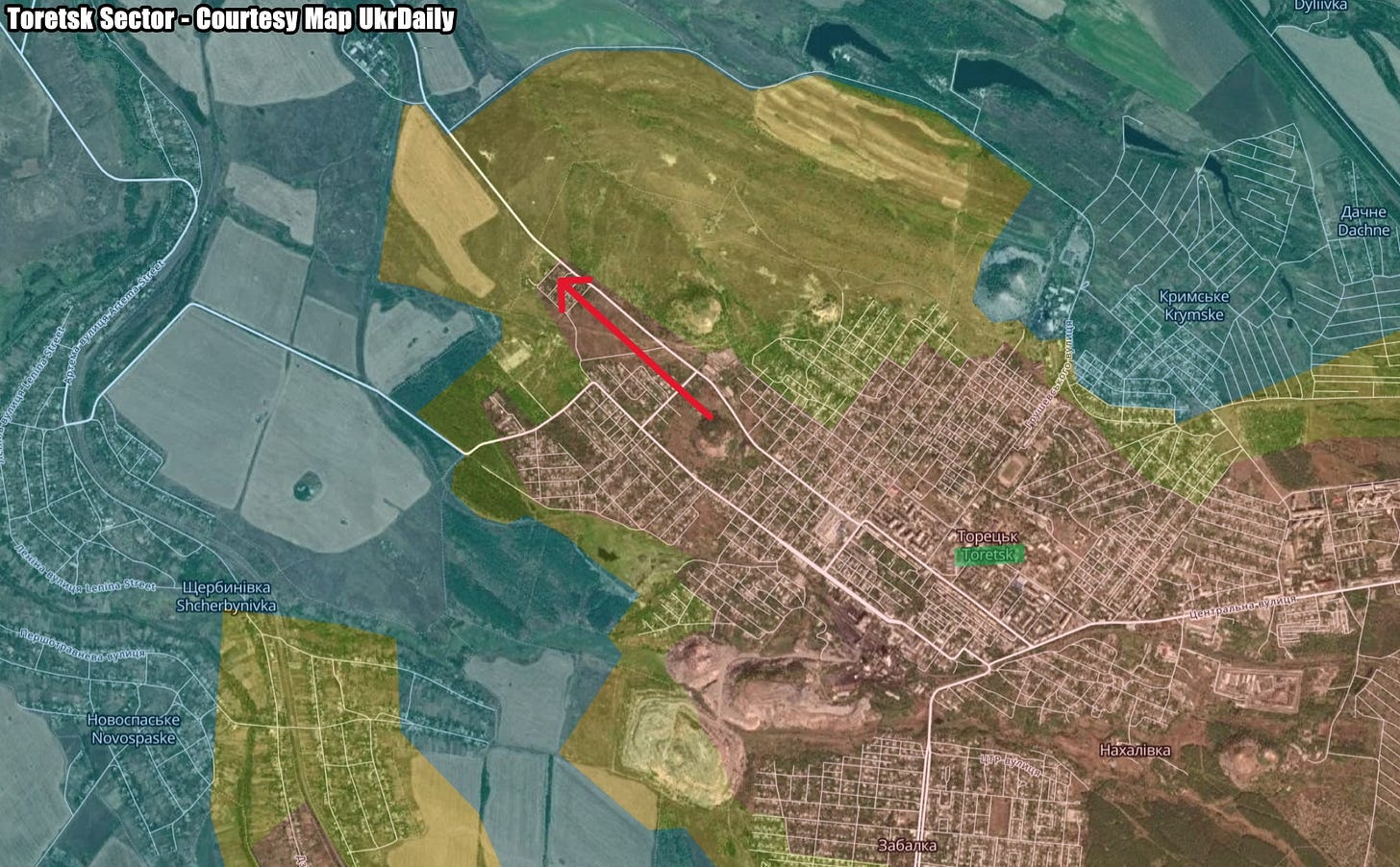
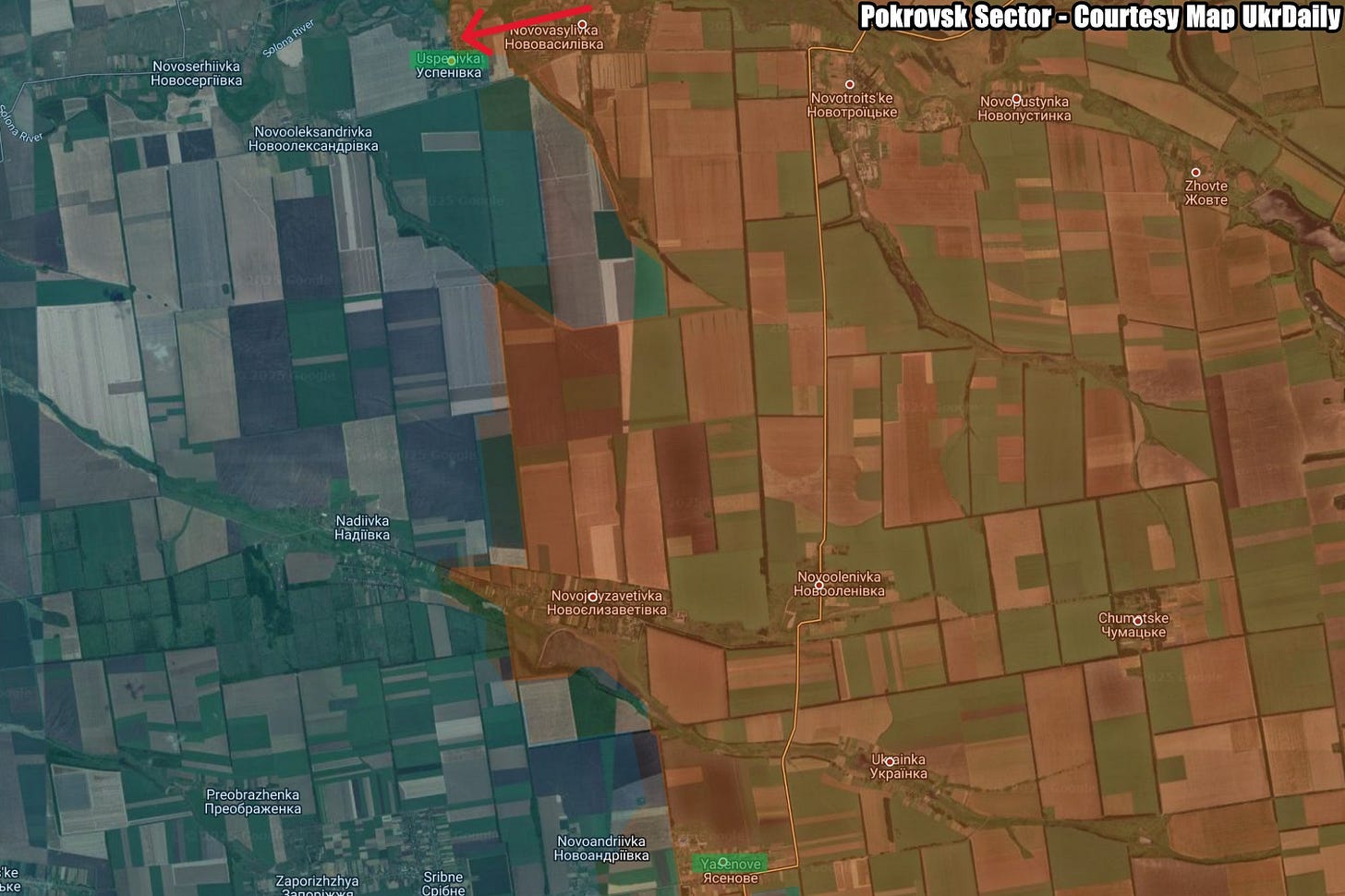
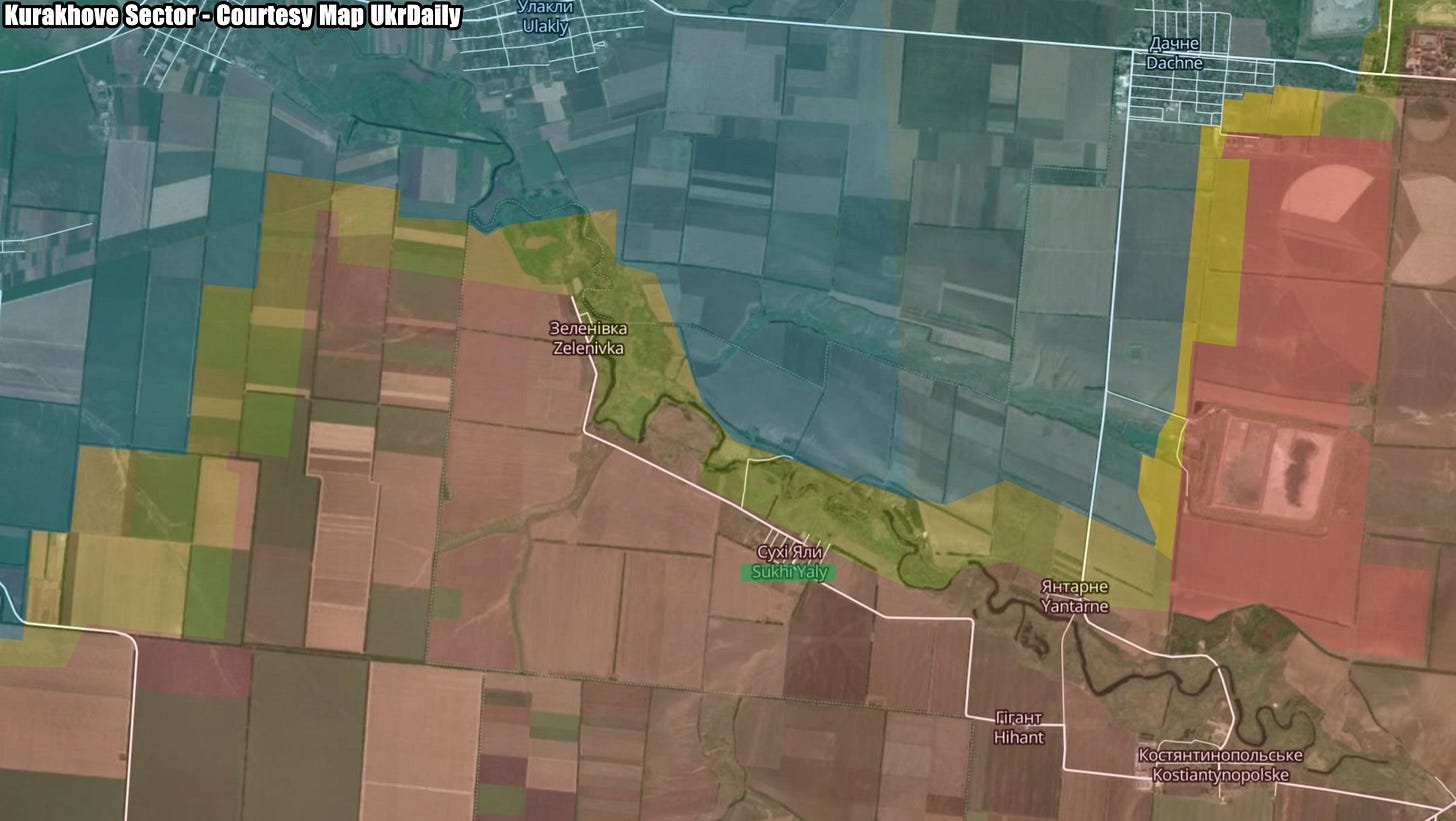

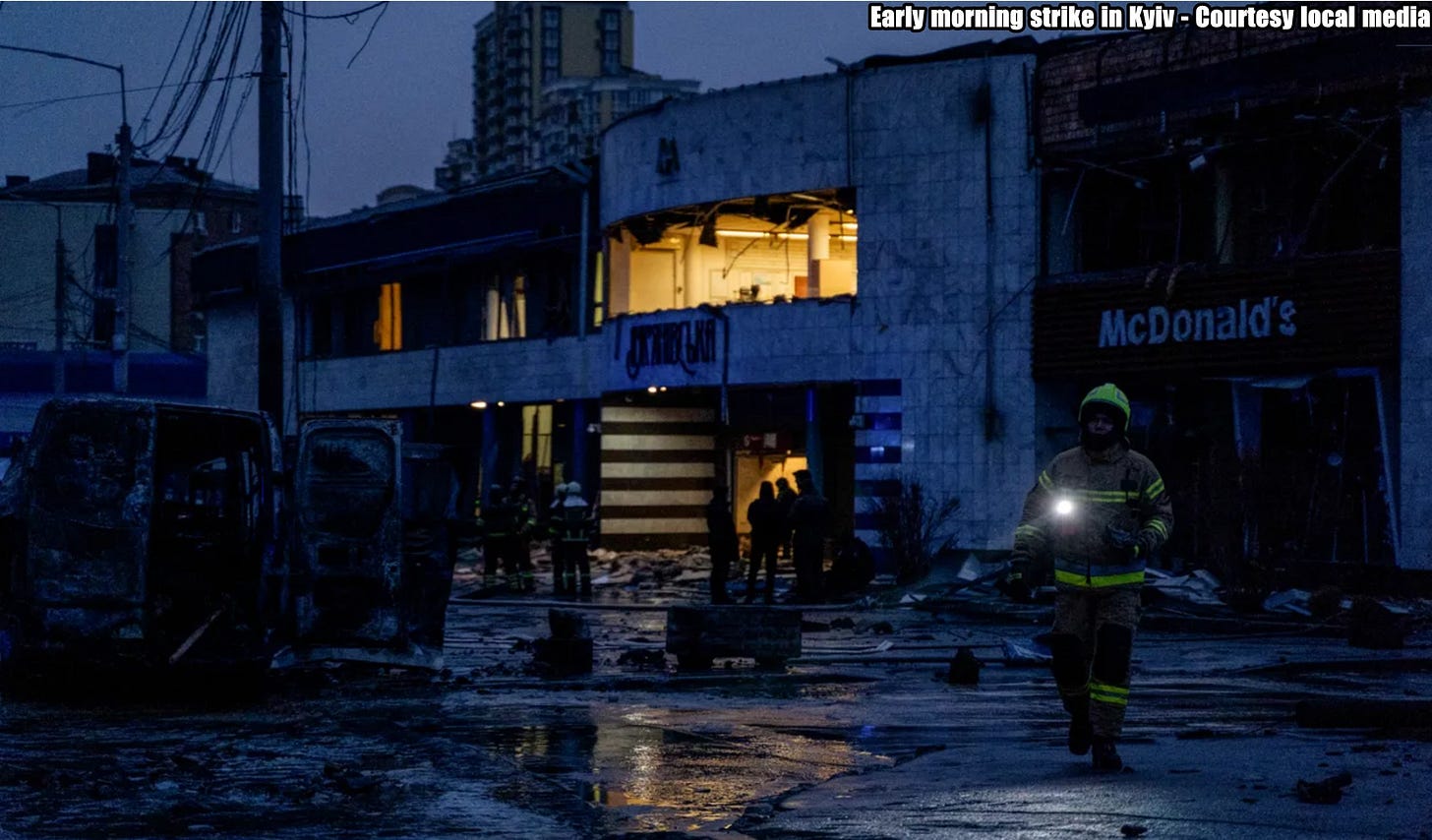
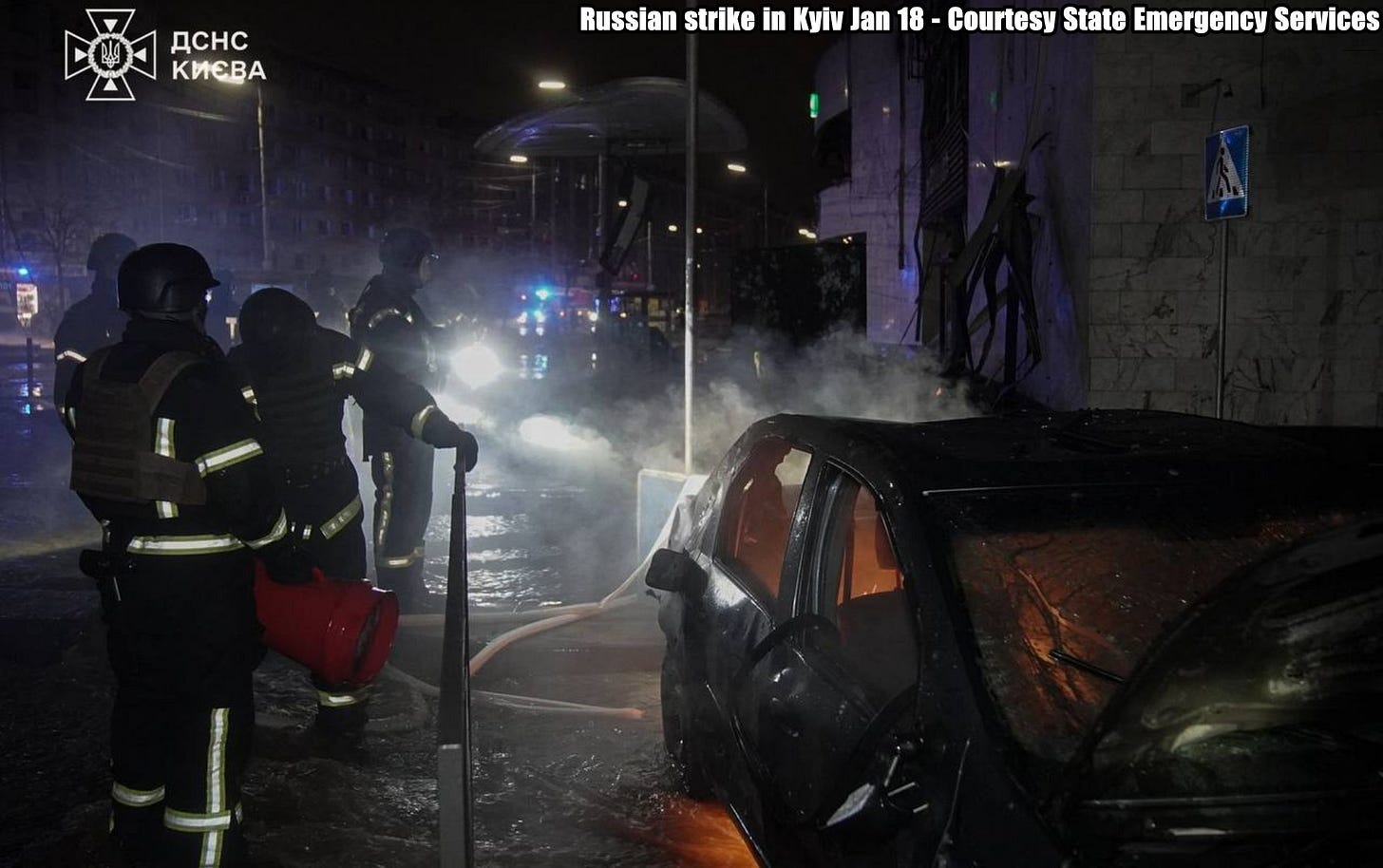


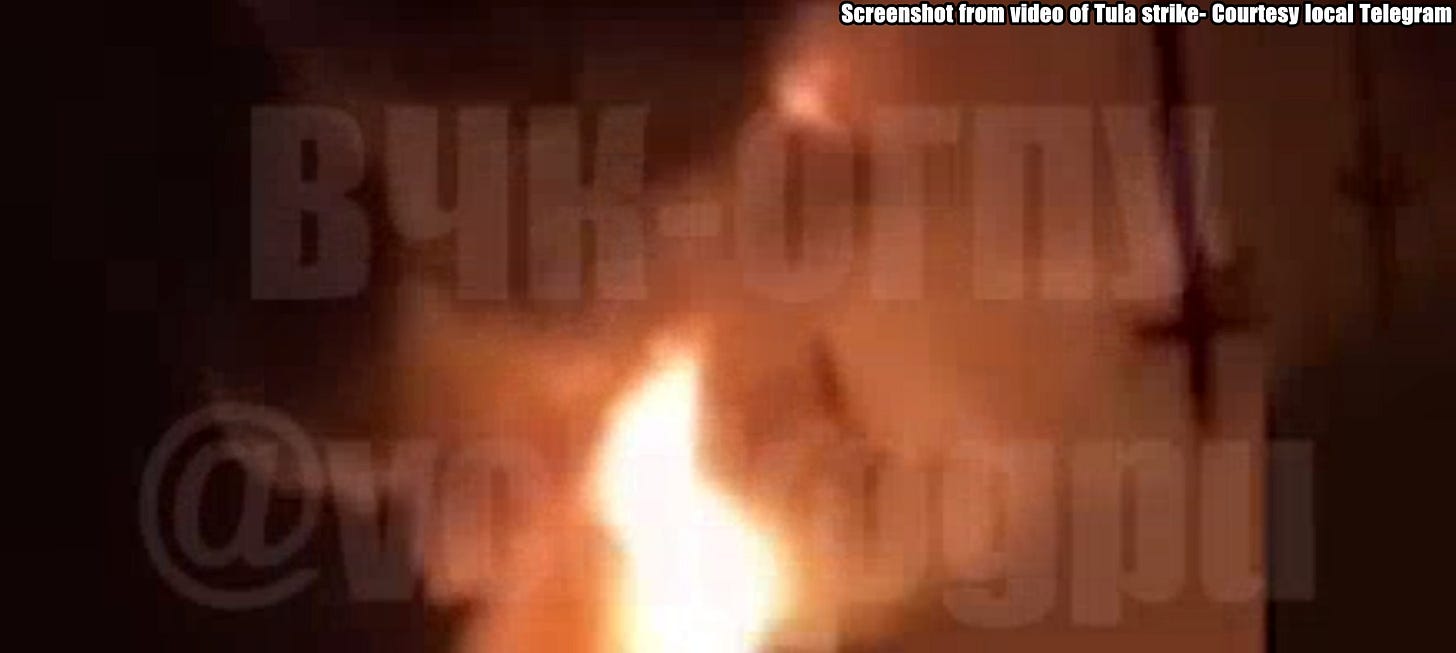

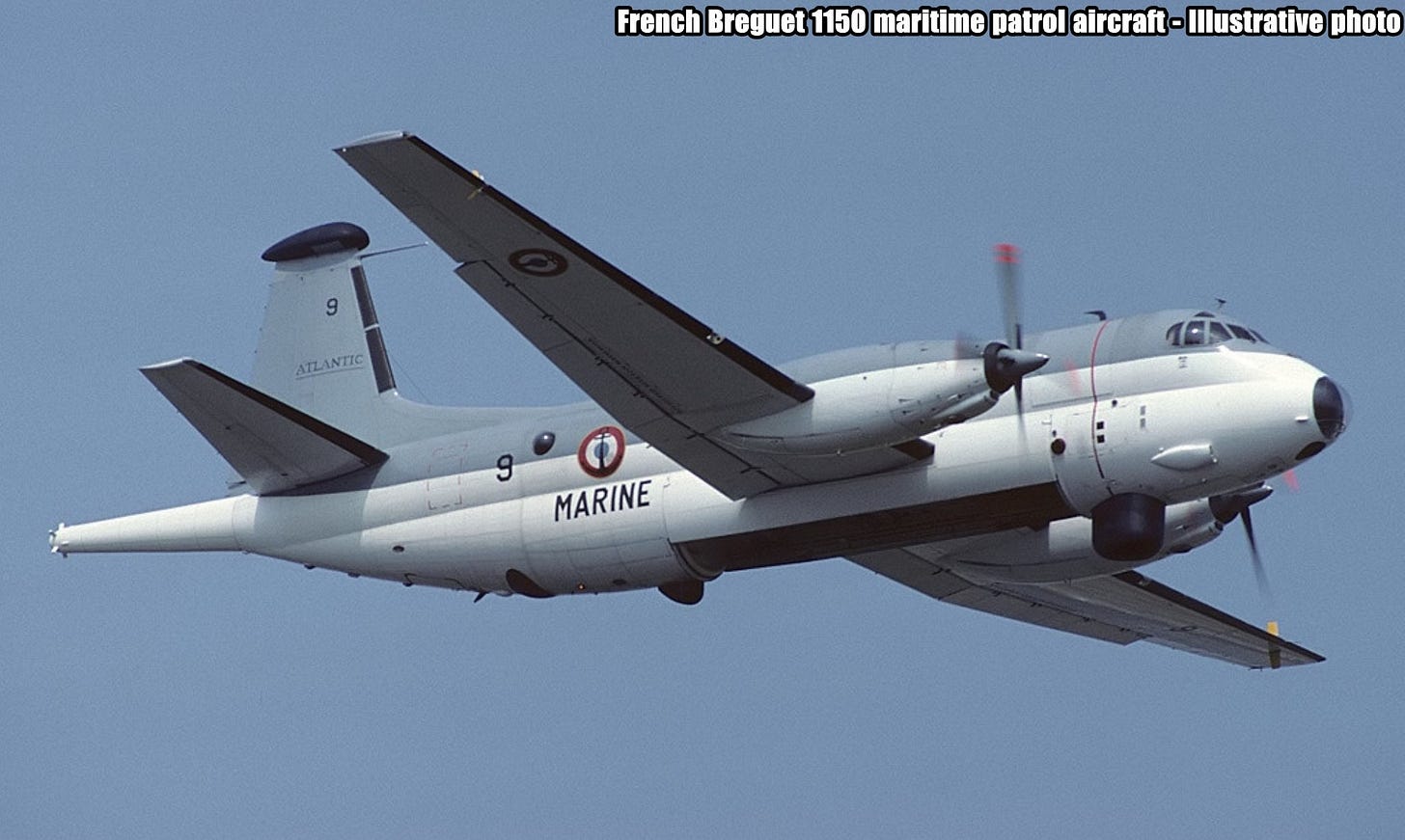
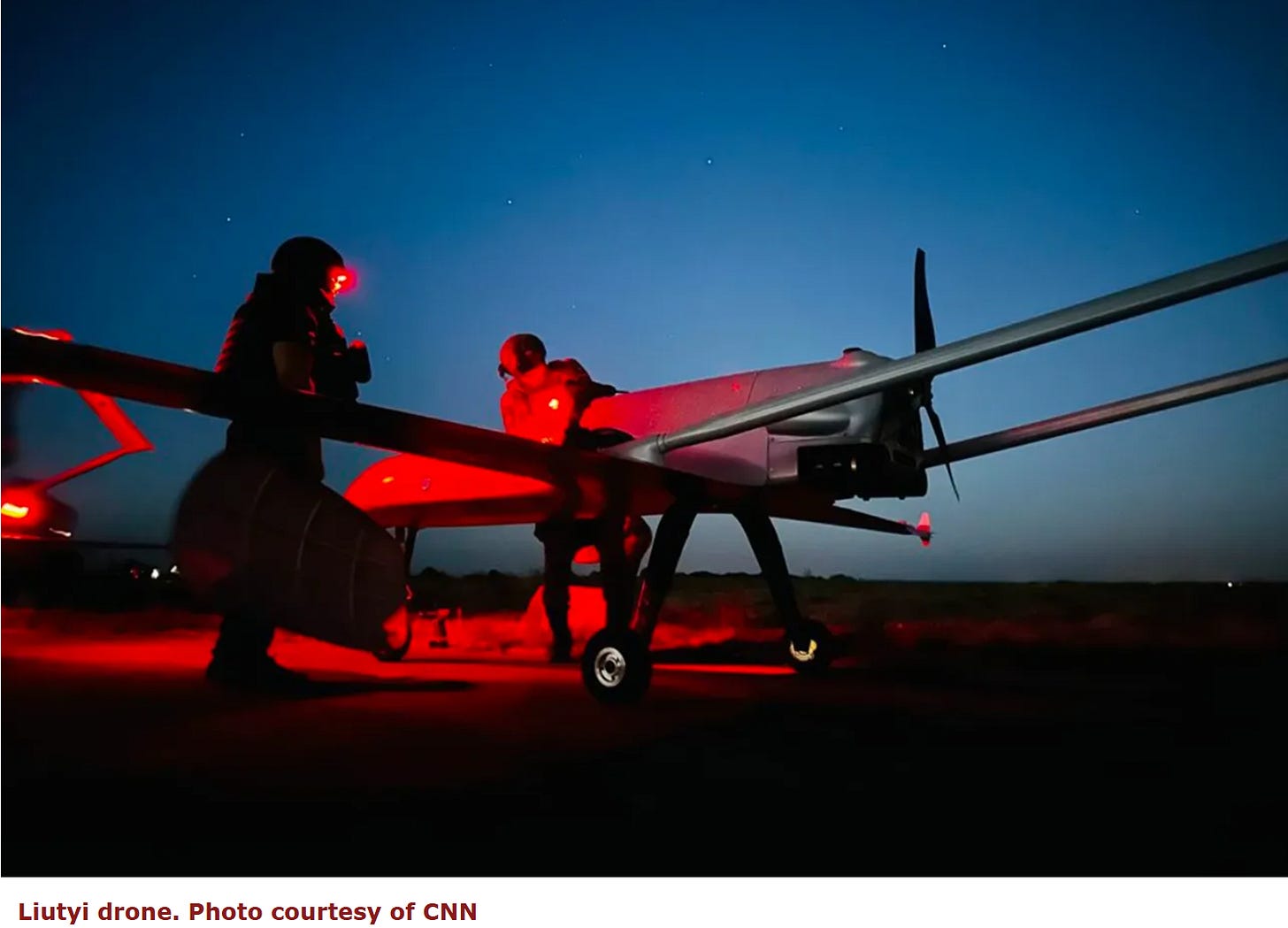
Oh, hey, hi!!